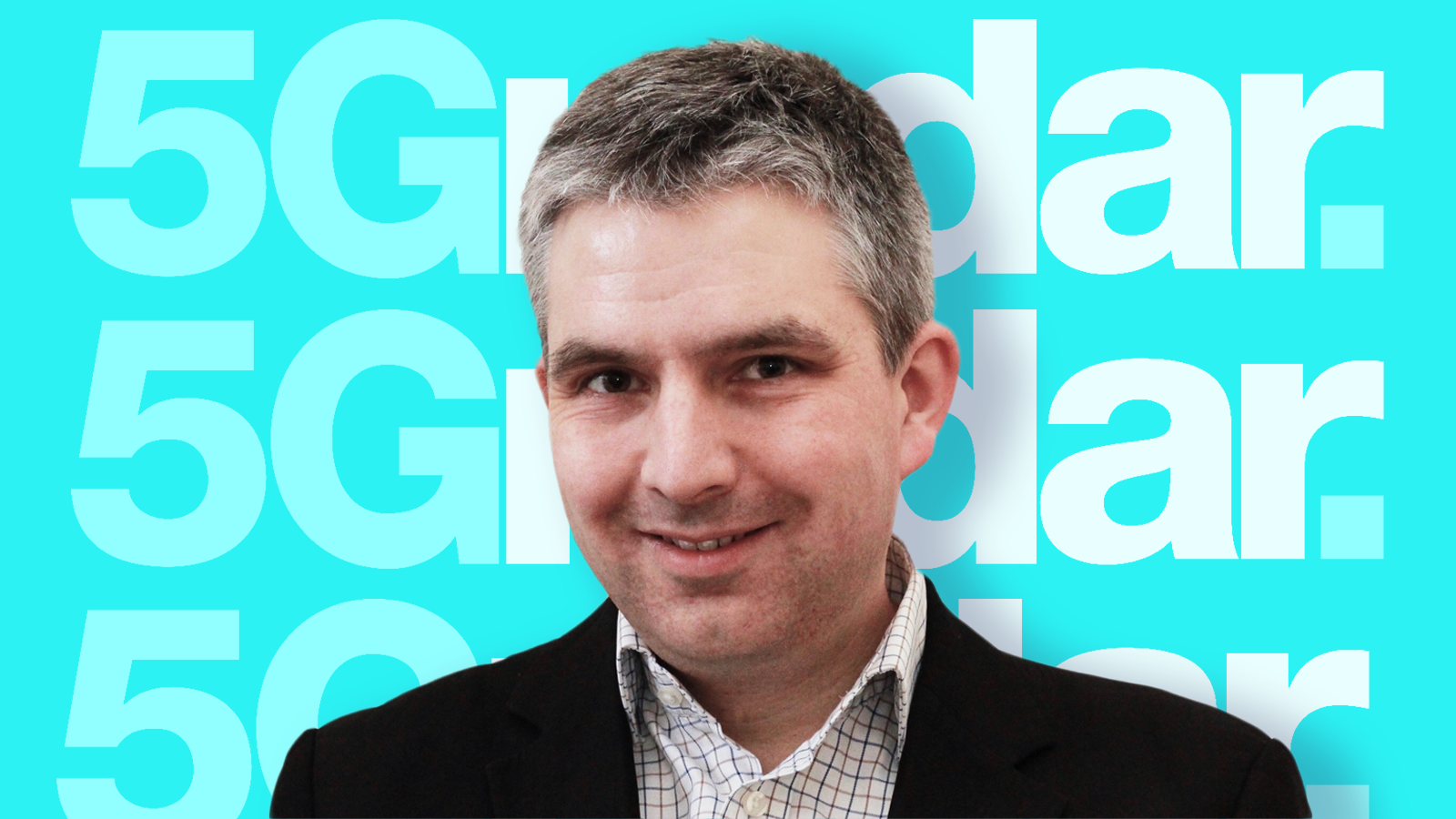5G is much more than a mobile upgrade
From multi-band connections, to FWA, to the Internet of Things, Ian Fogg, VP of analysis at Opensignal, looks at how 5G isn’t just a mobile upgrade.

5G isn’t just one technology. The 5G vision involves changes end-to-end in almost every part of the network. And, these changes will arrive over time, which means there are many different flavours of 5G that will offer very different real-world mobile network experiences. The difference between one kind of 5G and another will often be greater than the difference between 4G and 5G.
"Already, we see some of these different kinds of 5G in Opensignal’s data. There is an enormous range in the average speeds 5G users enjoy."
Ian Fogg, Opensignal.
Already, we see some of these different kinds of 5G in Opensignal’s data. There is an enormous range in the average speeds 5G users enjoy, and the time they spend connected to 5G networks. For example, in our recent report on the 4G User Experience in the US we found that 5G users on Verizon — that exclusively uses very high frequency mmWave spectrum — enjoyed average 5G download speeds of 494.7 Mbps compared with 60.8 Mbps on AT&T and 49.2 Mbps on T-Mobile.
When we looked at the time users spend connected to 5G, or 5G availability, the situation was reversed and T-Mobile 5G users connected the highest amount of time, with 22.5%, compared with 10.3% for AT&T users, and 0.4% for Verizon. The reason is because T-Mobile and AT&T used a different kind of low frequency wireless spectrum. Across other countries we also see big differences in the 5G experience. While only U.S. operators use mmWave for 5G today, operators in South Korea, Japan, Russia, Italy and Australia are all exploring this kind of 5G technology.
Today’s 5G experience is already superior to 4G
What is already clear is that 5G represents an enormous jump in users’ mobile experience. Across twelve leading countries Opensignal has found average 5G download speeds range from 14.3 times faster than 4G to 1.4 times as fast. In every country the 5G experience was a leap forward from older 4G technology. And this is just with the first version of 5G technology and immature equipment.
In most countries, average 5G download speeds are over 100 Mbps, which is not just faster than 4G, it’s faster than many users’ home broadband connections too. Users in Saudi Arabia see the fastest average 5G download speeds of 414.2 Mbps with South Koreans — which is the leading market in 5G subscriber penetration — enjoying average speeds of 312.7 Mbps.

The reason for this jump in speeds is partly due to the type of wireless spectrum as well as to improvements in 5G technology. Almost all operators have launched 5G services using newly available high capacity mid-band spectrum between 3Ghz and 4Ghz. These radio frequencies were not previously used by 4G or 3G mobile technology so they have no existing mobile users and enable 5G adopters to side-step congestion on existing mobile networks.
Also, because in part because they are high frequency, the amount of capacity is also much greater, so even as more people switch to 5G smartphones, the mobile networks will continue to be able to handle more users and more data.
SIGN UP FOR E-MAIL NEWSLETTERS
Get up to speed with 5G, and discover the latest deals, news, and insight!
5G will improve, just as 3G and 4G did
A mobile technology generation typically lasts for ten years, or more, with improvements to the standards and the mobile network experience arriving every couple of years. We saw this gradual improvement with both 3G and 4G. We will see a similar evolution with 5G services.
The early stage we are at with 5G is clear from the relative time 5G users spend connected to 5G now. In most countries where 5G exists, 5G smartphone users connect to 5G under one fifth of the time. 5G Availability will rise over time as operators build out 5G networks. But this compares with 4G Availability in the same set of countries which is typically over 90%, meaning smartphone users are able to connect to 4G almost all of the time.

The first version of 3G, Release 99, offered maximum download speeds of just 384Kbps when deployed on initial 3G networks. But by the time 4G arrived about ten years later, mobile users saw average 3G download speeds of several megabits per second, or over ten times faster than the first 3G services.
With 4G, initial 4G smartphones did not support voice telephony on 4G networks and the phones had to connect separately to the legacy 3G network all of the time to allow 4G customers to make and receive calls. This made the battery life of early 4G smartphones very poor compared with existing 3G phones. Now 4G telephony — voice over LTE (VoLTE) — is common.
"With 5G’s arrival, newer LTE standards allow phones to connect to multiple bands and combine their capacity to deliver higher speeds."
Ian Fogg, Opensignal.
Also, the initial 4G standard allowed phones to connect to one frequency band at a time which limited the average speed to what that single band could support. With 5G’s arrival, newer LTE standards allow phones to connect to multiple bands and combine their capacity to deliver higher speeds to users than could be possible with any one single band. As with 3G’s evolution, 4G average speeds now are many times faster than those experienced by users of the first 4G networks as a result.
Mobile video and gaming
With 5G adding a lot more network capacity mobile video will become more compelling. Today, mobile video often stutters — especially in busy locations or peak hours of the day — and in some cases may freeze completely. This hurts the experience for consumers and the business opportunity for apps like Netflix, Amazon Prime, TikTok, YouTube or iFlix.
Mobile video apps often automatically select lower video quality on mobile connections compared with WiFi to reduce the chance of problems with playback. On a 5G network, especially when connected to new higher frequency spectrum, more users will be able to enjoy high definition video streams at the same time without issues.
One of the greatest changes on 5G will be around latency, or the responsiveness of mobile networks. Faster latency makes multiple gaming more compelling especially if the latency is consistently fast and does not occasionally deteriorate. Today’s 5G networks are not greatly different in the latencies they offer users. But this will change over time as operators upgrade their core network to 5G standards and update to upcoming versions of the 5G standards.
Multiplayer mobile gaming has been one of the greatest hits of recent years, with action games such as Garena Freefire, PUBG Mobile or Fortnite involving 50 to 100 players, playing simultaneously on a smartphone. MOBA games have also arrived on mobile, having been popularised on PCs with League of Legends or DOTA2.
In the 4G era, gamers often choose their smartphones to WiFi wherever possible because of the unpredictable experience of current mobile networks. The improvements coming with 5G should mean this is no longer necessary which will allow players to become truly mobile when playing demanding multiplayer mobile games rather than tied to a nearby WiFi signal.
5G is more than a mobile technology
The industry has two main initial targets for 5G:
1) Improved mobile broadband for smartphone users which enables better mobile app experiences, smooth video streams, and more responsive mobile games.
2) And, fixed wireless access (FWA) where 5G can serve as a way to connect homes and small businesses instead of wired broadband connections.
"Almost every economic sector is in 5G’s sights from smart agriculture, factory automation, transportation, healthcare, and the utility infrastructure our cities rely upon."
Ian Fogg, Opensignal.
But the aspirations of 5G’s designers go much further. The industry aims for 5G technologies to be at the heart of our economies. Almost every economic sector is in 5G’s sights from smart agriculture, factory automation, transportation, healthcare, and the utility infrastructure our cities rely upon. But these Internet of Things (IoT) markets require different flavours of 5G technology to meet the needs of each opportunity. For example, for latency to be not just low, but also extremely reliably low. Or, for extended range, or to simultaneously connect many millions more devices than mobile networks can do today, and reliably, and at low cost.
The 5G networks deployed today, at the start of the 5G era, do not yet have the capabilities for the full breadth of the vision of 5G’s designers. Upcoming 5G standards releases will deliver the technologies to support these areas. And, in so doing, will further widen the differences between types of 5G that we already see today between mmWave 5G and mid-band 5G-based 5G services, or between fixed wireless 5G services and those aimed at the billions of smartphones in use worldwide.
Ian leads the team of analysts behind Opensignal’s industry-leading analysis and insights. Formerly an analyst at Forrester, IHS Markit, and Jupiter Research, he has a broad complement of knowledge and experience across the end-to-end mobile telecom market.

